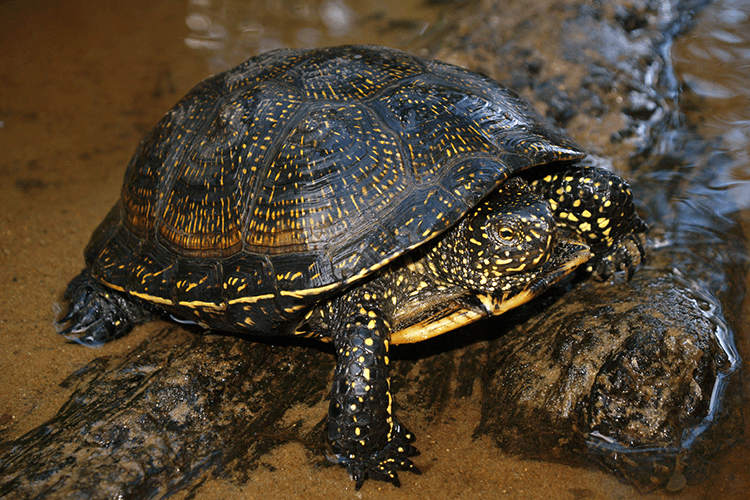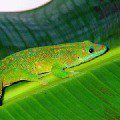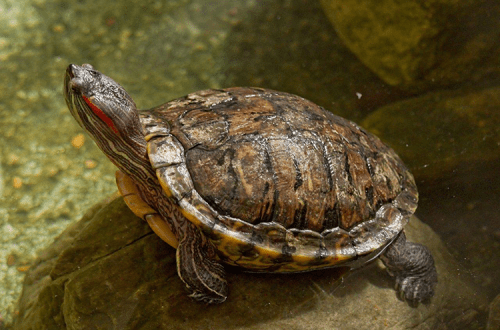
European bog turtle
European bog turtles are very smart, unpretentious and perfectly adapted to captivity. Turtles prefer to spend most of their time in the water, but from time to time they like to get out on land to bask in the sun. Omnivorous and undemanding in feeding.
The European marsh turtle, due to its interesting appearance, prevalence and comparative unpretentiousness in keeping, often adorns the aquariums of exotic pet lovers.
The carapace (upper shell) of European bog turtles is round, oval, and very smooth. The color is yellow-green or black, with many yellow or white spots, merging into graceful lines and rays. In its natural habitat, a wet tortoise shell glistens beautifully in the sun, and becomes matte as it dries. This effect can also be seen in the aquarium, with proper lighting of the land area.
The head of the turtle is rather massive, slightly rounded, dark, with small yellow or white spots, the paws are of the same color.
European marsh turtles weigh, as a rule, up to 1,5 kg, the carapace length is up to 35 cm.

Lifespan
European marsh turtles are long-lived. It is believed that life expectancy in good conditions is 30 years on average, but these turtles often live up to 100.
Features of maintenance and care
European bog turtles are unpretentious, they can be kept in artificial ponds or spacious aquariums – at least 100 liters for a medium-sized turtle. As the pet grows, the aquarium is replaced, but the more space for the turtle in the aquarium, the better for it.
European marsh turtles spend most of their time in the water, but in their natural habitat they simply love to get out on stones and snags to dry and bask in the sun. Turtles cannot be deprived of such an opportunity even in home conditions. An island of land with a gentle coast must be placed in the aquaterrarium, which should occupy 1/3 of the entire space. An incandescent lamp and a UF lamp are installed above the island (at a height of at least 20 cm from the island to avoid pet burns), the temperature under the lamp should be 30-32 ?
The light day of the marsh turtle lasts 12 hours, all this time the lamps must work. Do not forget that the absence of light and heating causes diseases of the bones and shell, because. interfere with the absorption of calcium by the body.
Turtles have a great appetite, and the water in their aquarium gets dirty pretty quickly, so a powerful filter is a must-have. In addition, there are two secrets that can slow down the process of water pollution: while feeding, the turtle can be placed in a separate container or fed with tweezers so that the pet immediately swallows food.
The optimum water temperature for the European bog turtle is 27°C. In the wild, the turtle hibernates for the winter, but in a home environment there is no need for this and the turtles are active throughout the year.
Marsh turtles do not need special decorations and soil, but many owners use them as decoration, but it should be borne in mind that the presence of decorative elements makes it difficult to clean the aquarium.
Since European bog turtles are omnivorous and often quite aggressive, it is recommended to keep them alone. Potential neighbors for these pets are divided into prey and competitors. You should not hope too much that a wayward predator will find a common language even with a representative of his own species.
The diet of omnivorous turtles in captivity consists of special foods, insects, larvae, fish, a small amount of plant food, etc. The diet is based on ready-made, complete diets for turtles, because. they are enriched with all the necessary nutrients, vitamins and minerals.
Distribution
European marsh turtles choose various water bodies as habitats: lakes, ponds, canals, swamps and even large puddles. The distribution area is quite wide: turtles can be found throughout Europe, as well as in the Middle East and northern Africa.





